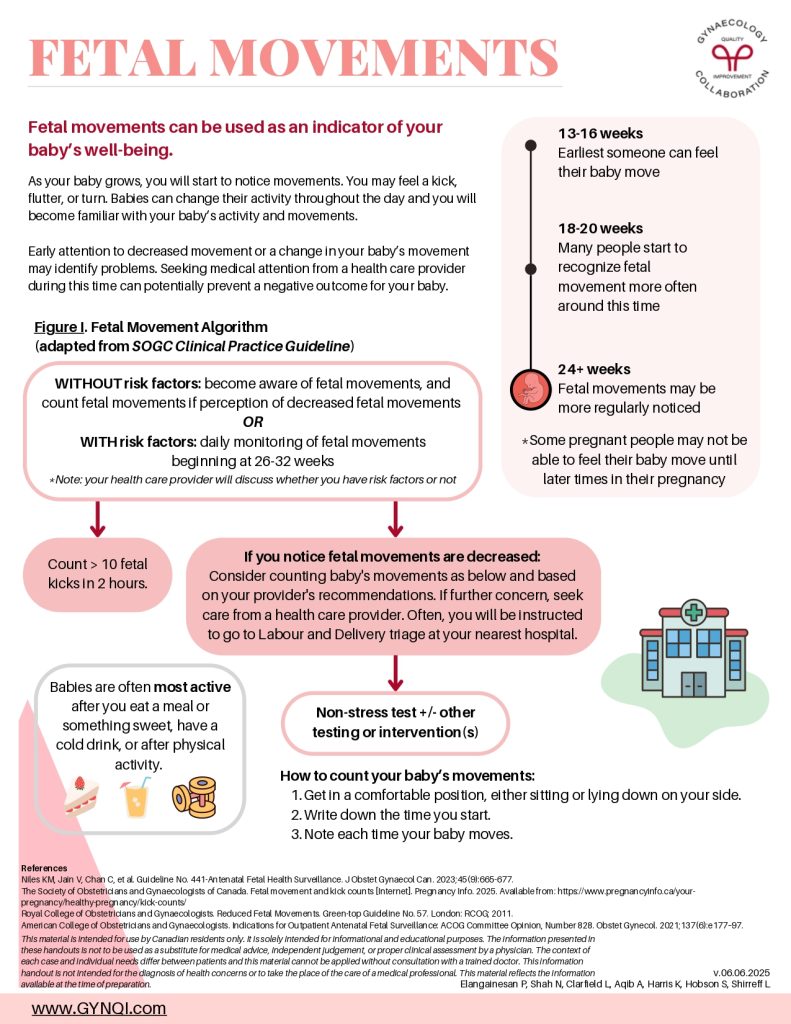
Fetal Movements
Fetal movements can be used as an indicator of your baby’s well-being.
As your baby grows, you will start to notice movements. You may feel a kick, flutter, or turn. Babies can change their activity throughout the day and you will become familiar with your baby’s activity and movements.
13-16 weeks: Earliest someone can feel their baby move
18-20 weeks: Many people start to recognize fetal movement more often around this time
24+ weeks: Fetal movements may be more regularly noticed
* Some pregnant people may not be able to feel their baby move until later times in their pregnancy.
Figure 1. Fetal Movement Algorithm (adapted from SOGC Clinical Practice Guideline)
WITHOUT risk factors: become aware of fetal movements, and count fetal movements if perception of decreased fetal movements
OR
WITH risk factors: daily monitoring of fetal movements beginning at 26-32 weeks
* Note: your health care provider will discuss whether you have risk factors or not
Option 1: Count >10 fetal kicks in 2 hours.
Option 2: If you notice fetal movements are decreased: Consider counting baby’s movements as below and based on your provider’s recommendations. If further concern, seek care from a health care provider. Often, you will be instructed to go to Labour and Delivery triage at your nearest hospital. Proceed to non-stress test +/- testing or intervention(s).
How to count your baby’s movements:
- Get in a comfortable position, either sitting or lying down or your side.
- Write down the time you start.
- Note each time your baby moves.
Babies are often most active after you eat a meal or something sweet, have a cold drink, or after physical activity.



